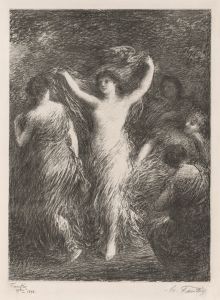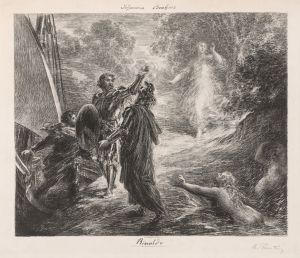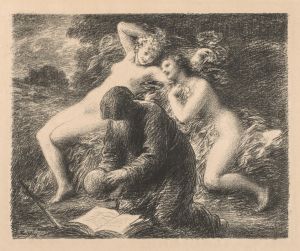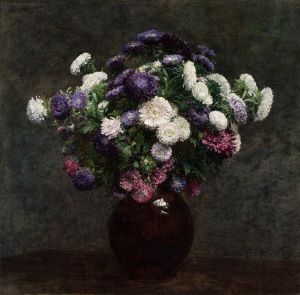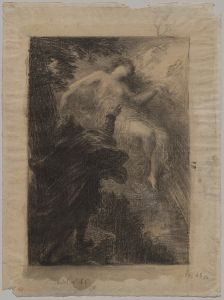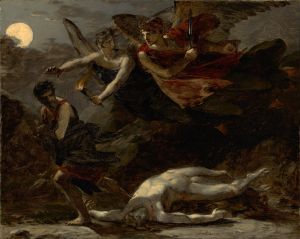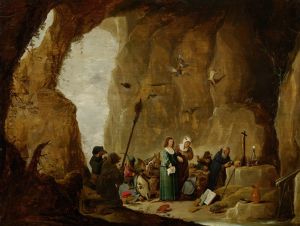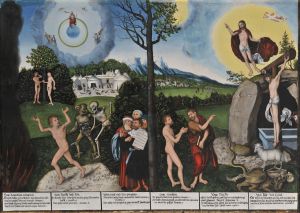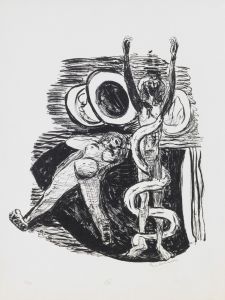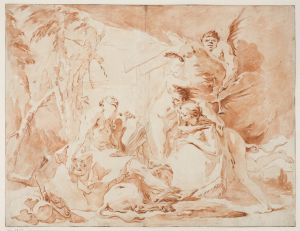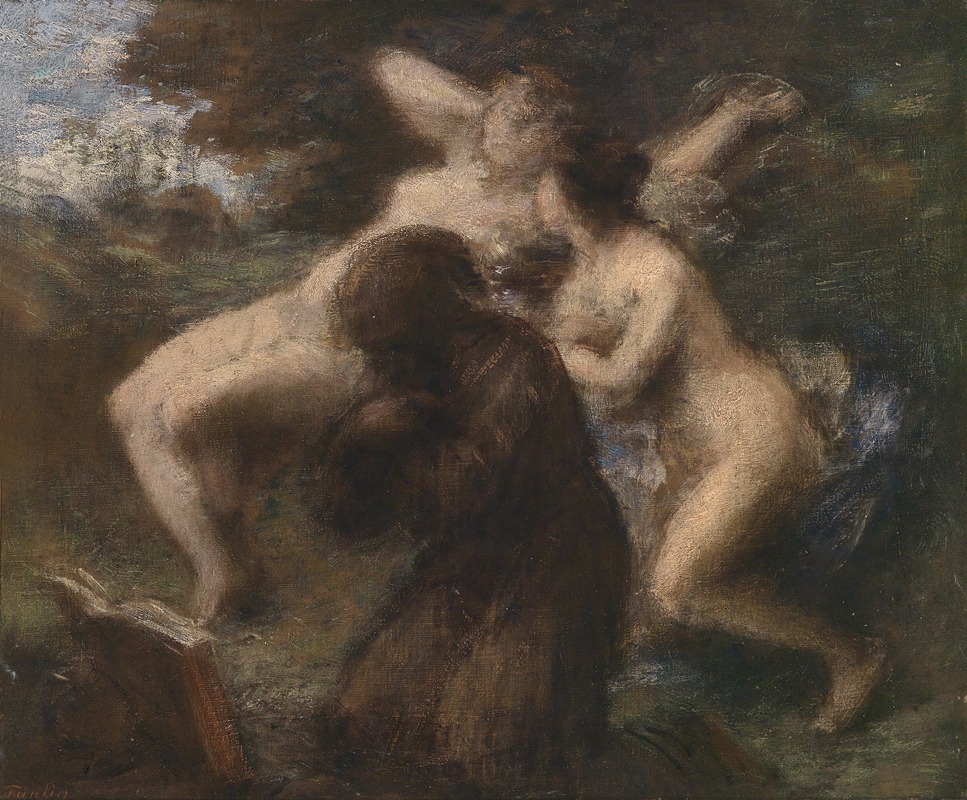
Temptation Of St. Anthony
A hand-painted replica of Henri Fantin-Latour’s masterpiece Temptation Of St. Anthony, meticulously crafted by professional artists to capture the true essence of the original. Each piece is created with museum-quality canvas and rare mineral pigments, carefully painted by experienced artists with delicate brushstrokes and rich, layered colors to perfectly recreate the texture of the original artwork. Unlike machine-printed reproductions, this hand-painted version brings the painting to life, infused with the artist’s emotions and skill in every stroke. Whether for personal collection or home decoration, it instantly elevates the artistic atmosphere of any space.
Henri Fantin-Latour was a French painter known for his still lifes and group portraits of Parisian artists and writers. However, his work also included imaginative and mythological themes, one of which is "The Temptation of St. Anthony." This painting is part of a broader tradition in Western art that depicts the story of Saint Anthony the Great, an early Christian monk who is said to have faced numerous temptations during his life in the Egyptian desert.
"The Temptation of St. Anthony" by Fantin-Latour is a work that captures the essence of this narrative, although specific details about the painting, such as its creation date, dimensions, and current location, are not widely documented. The theme itself has been a popular subject for many artists, including Hieronymus Bosch, Salvador Dalí, and Max Ernst, each bringing their unique interpretation to the story.
Saint Anthony is often portrayed as a figure of piety and resilience, resisting the temptations of wealth, power, and carnal desires. These temptations are frequently personified by demons, fantastical creatures, and alluring figures, creating a vivid and often surreal tableau. Fantin-Latour's rendition likely follows this tradition, employing his skill in composition and detail to explore the psychological and spiritual struggles of the saint.
Fantin-Latour's broader body of work is characterized by its attention to detail and a subdued color palette, which might also be reflected in his depiction of Saint Anthony's trials. His ability to convey emotion and narrative through subtle expressions and gestures would have been particularly effective in illustrating the saint's inner turmoil and steadfast faith.
While Fantin-Latour is primarily celebrated for his realistic still lifes and portraits, his foray into imaginative subjects like "The Temptation of St. Anthony" demonstrates his versatility as an artist. It also reflects the 19th-century interest in spirituality, mysticism, and the exploration of the human psyche, themes that were prevalent in the Symbolist movement, which sought to express the ineffable and the mysterious through art.
In summary, while specific details about Henri Fantin-Latour's "The Temptation of St. Anthony" are scarce, the painting fits within a long-standing artistic tradition that explores the trials of Saint Anthony. Fantin-Latour's approach to this theme would have been informed by his meticulous style and interest in capturing the complexities of human experience, contributing to the rich tapestry of interpretations surrounding this legendary narrative.






